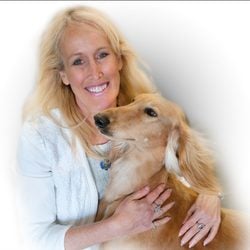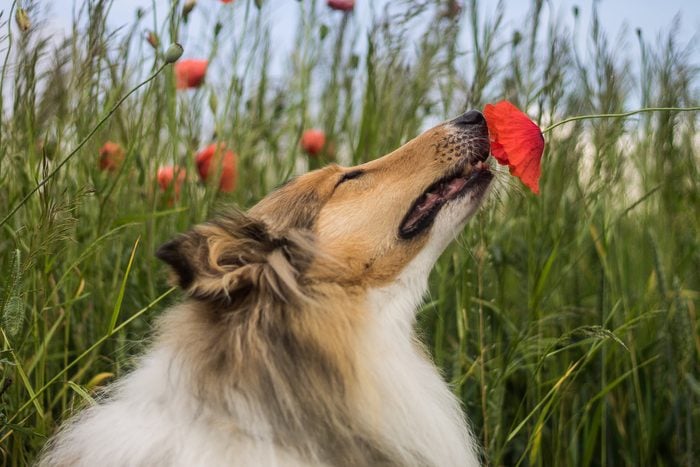
Dogs with the most loveable snouts
You may look at your pup’s long, elegant nose and narrow face and see the picture of canine beauty and perfection. A dog with a long nose is simultaneously dignified and cute, distinguished and cuddly. So it might surprise you to learn that there are a lot of genetics behind that long schnoz, along with centuries, if not millennia, of targeted breeding.
“Numerous dogs in the hound group were originally bred for hunting deer, wild boar and rabbits since the Middle Ages,” says Danielle Bernal, DVM, a veterinarian with Wellness Pet Company. “More recently, they are often used to track people for safety purposes.” She explains that scent hounds, in particular, developed an elongated nose that provided them with a larger surface area for olfactory receptors, the cells that enable dogs to detect scents.
To find out more about long-nosed dogs, we turned to a trio of veterinarians with decades of canine experience. Ahead, they explain some of the particulars of the most popular dogs with long noses, including what you should know before bringing one home.
What to know before adopting a long-nosed dog
When picturing a dog with a long nose, there’s a good chance you’re visualizing a scent hound. “Scent hounds, generally described as tough but slow, use their noses to smell their way to what they are seeking,” explains Rebecca Tremble, DVM, a veterinarian and the U.S. director of professional partnerships and strategy at Hill’s Pet Nutrition. So it’s no surprise that their sniffers tend to be on the long side.
Nowadays, these dolichocephalic breeds—the technical term for animals whose skulls are markedly longer than they are wide—are among some of the most beloved and are probably just as content to snuggle on the couch with you as they are to chase down a rabbit, though most do need regular exercise. “Although your hound dog doesn’t have to hunt for food anymore, their predatory instincts haven’t gone away,” says Dr. Bernal. “This doesn’t mean you need to start hunting as a weekend hobby, but you will need to accommodate their desire to run and, in the case of scent hounds, use their noses to discover the world.”
Our experts say that hundreds of years of breeding make many of these long-nosed, fleet-footed pups a flight risk. “These types of dogs make ideal companions for individuals with a secure area for them to roam freely,” Dr. Tremble says. “It is essential to keep them on a leash at all times to prevent them from wandering off. These dogs are very intelligent and can be trained, but that training works best when they understand why they are being taught to do something. If they don’t [know that], they may choose to ignore the work and effort put into teaching them and ultimately choose to do their own thing. For this reason, I typically recommend that pet owners seek professional help when training a hound dog.”
If you’re up to the task of owning a dog with a long nose, pick your favorite of the breeds below, check its national American Kennel Club breed club for breeder referrals or rescue groups that may have purebred rescue dogs in need of a loving home.
Get Reader’s Digest’s Read Up newsletter for more pets, humor, travel, tech and fun facts all week long.
About the experts
Reviewed for accuracy by: Caroline Coile, PhD, an award-winning journalist specializing in canine breeds, health and science. She’s the author of 34 books, including Barron’s Encyclopedia of Dog Breeds. |
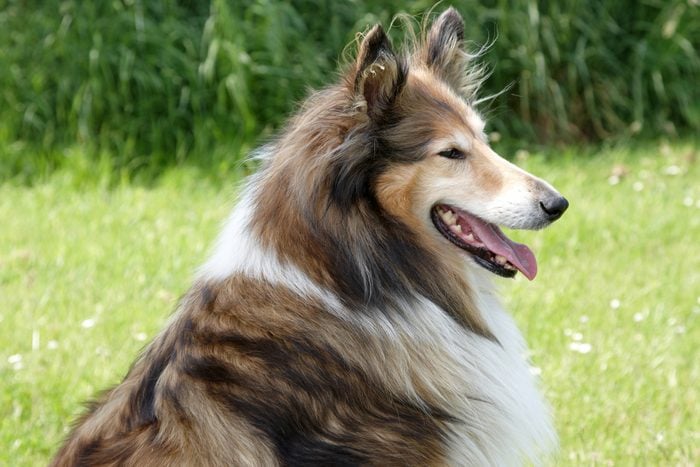
Collie
Lassie, one of the first canine stars of TV and film, was an all-around heroic farm dog. Today’s collies, however, are probably more content to snooze on a cool tile floor than herd cattle or rescue Timmy from a well. The breed is a herder, not a hound or hunting dog, so its long nose probably didn’t help it do its job; its snout simply looked elegant once the dog came off the farm.
The medium-build, long-haired, long-nosed breed is a great family dog—collies are extremely intelligent, loyal and watchful over little kids. Happiest around their humans, these dogs don’t like to be left alone for extended periods. They’ll bark when they’re bored or lonely, so apartment dwellers take note.
Keep in mind that those luxurious coats need a lot of regular brushing, so stock up on grooming supplies. And be mindful of the fact that your collie is wearing a thick fur coat even in the summer; these dogs can’t handle long periods of heat or running. But not to worry: There’s also a shorthaired version, the smooth collie.
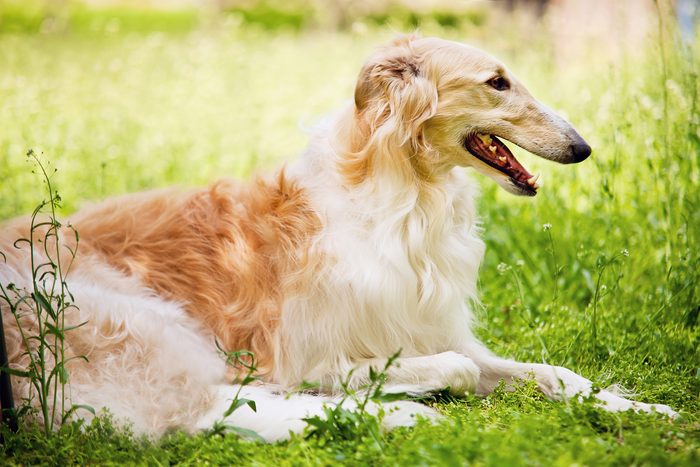
Borzoi
In the contest for which dog has the longest snout, the borzoi, formerly known as the Russian wolfhound, wins by—what else?—a nose. Just how big is that skinny schnoz? The longest nose ever recorded on a borzoi measured more than 12 inches. Bred in czarist Russia for hunting foxes, wolves and other fast-moving prey, the borzoi is a silky-coated, fleet-footed sight hound, a group of dogs that hunt not by scent but by sight.
What are you in for when you bring home a borzoi? Most likely a chilled-out, calm couch dog that’s content with short bursts of exercise. These pups still have a strong chase instinct, so don’t let them run loose in unfenced areas.
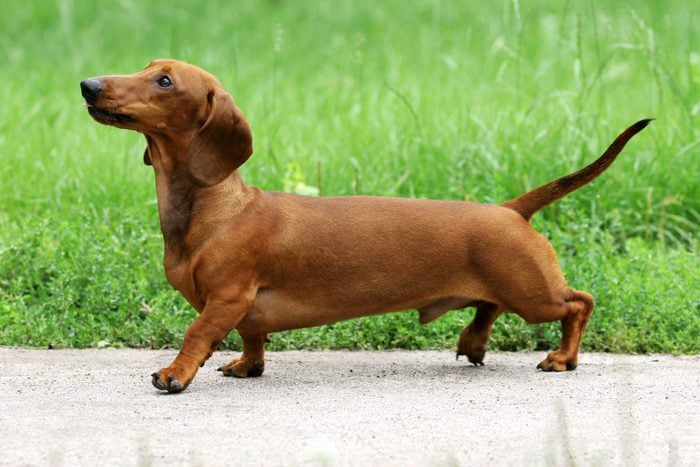
Dachshund
Long ears, long tail, long body, long nose … and super-short legs. That about describes the dachshund, a perennially popular dog breed loved for its comical looks and friendly demeanor. Dachshunds were originally bred to be fearless hunters, ready to chase a fox, badger or other burrowing animal down a hole. Today’s playful doxies may still have a strong kill instinct, usually demonstrated on their short-lived toys.
If you’re ready to bring this hot dog home, know your options: You can get a miniature or standard-size dachshund with a long, smooth or wire-haired coat. Be aware that they tend to bond with one person, so it takes some work to get them integrated into a household. As for care, don’t overlook those sweet floppy ears. Dr. Bernal says that dachshunds and other similar “dogs with heavy, drop-over ears” are prone to getting dirt and moisture trapped in their ears, “making for the perfect conditions for ear infections.”
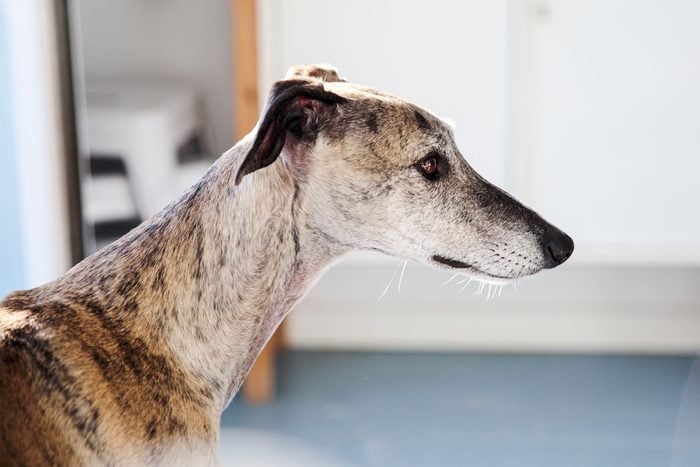
Greyhound
The track stars of the canine world, greyhounds are often associated with dog races. These days, greyhound racing is banned in all but four U.S. states, and these pooches are now much more popular as companion pets. Still, because of their ingrained chase instinct, greyhounds shouldn’t be allowed to run off-leash in unfenced areas and should be carefully introduced to smaller dogs and cats.
Because the greyhound is one of the fastest dog breeds, you might assume this docile dog needs lots of space for endless exercise. But these tall, lean, long-nose beauties are surprisingly well-suited to apartment living—as long as they get regular walks, they do just fine in small quarters. They need minimal grooming, but because of their short coats and lack of body fat, they need a coat in cold weather. Another crucial fact for anyone who owns one of these dogs: “Greyhounds are prone to having … reactions to anesthesia,” says Dr. Bruns. “If ever your greyhound is being put under, be sure to discuss concerns with your veterinarian to have a plan in case of a reaction.”
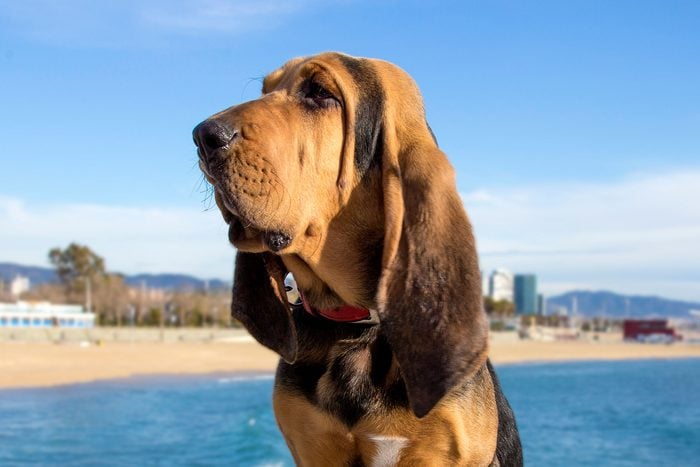
Bloodhound
Prized for its acute sense of smell, the bloodhound has long aided law enforcement in sniffing out wrongdoers or missing persons. So if you decide to keep a bloodhound as a pet, expect a lot of stops on your daily walk for sniffing out every last scent. “Hound dogs thrive with patient pet owners,” says Dr. Tremble, “as they are naturally inclined to pursue scents and sights that may not align with their owner’s interests.”
Set yourself up for success as a bloodhound owner by taking the breed’s needs into consideration before deciding to adopt. These are sweet and loyal family dogs, but they’re also stubborn and need a lot of consistent training. And despite the long faces and droopy expressions that give them a lethargic look, bloodhounds have a lot of energy—a fenced yard is best. Oh, and these guys drool … a lot.
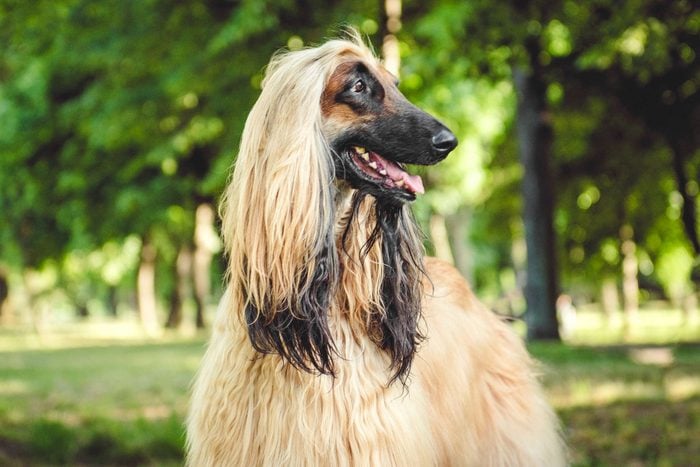
Afghan hound
A supermodel among dogs, the Afghan hound is one of the world’s oldest breeds, tracing its line back thousands of years. Originally bred for chasing and cornering large prey, Afghan hounds still have a strong prey instinct, so they should ideally be raised with smaller animals or introduced to them carefully. They are at turns affectionate and aloof, and they’ll seek cuddles or playtime only when they’re in the mood for it. Yet Afghans are almost always gentle and don’t bark a lot. That long, silky coat requires a major commitment, though, either to regular brushing or professional grooming. Luckily, despite all that fur, they don’t shed a lot.
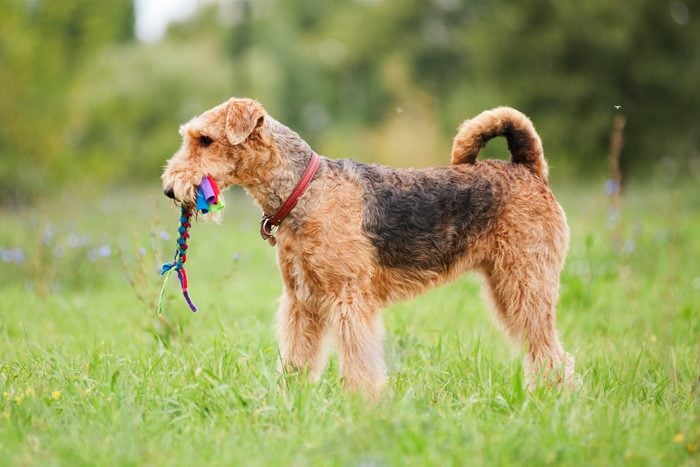
Airedale terrier
They once roamed the docklands of Britain, hunting rats and otters, and Airedale terriers still have a lot of the characteristics of working dogs: They are extremely intelligent and active, and they need a lot of stimulation (such as with puzzle toys) and steady training. These sturdy dogs love long walks or racing around a fenced-in yard. Stubborn and determined, Airedales respond well to obedience school. These intrepid pups like to act like clowns—really, really smart clowns. This is a dog breed that will keep you on your toes, so be sure you’re ready to fully commit. Free-spirited Airedales are not suited to apartment living, and they may need time to warm up to other dogs. Intensely protective by nature, they make great family watchdogs.
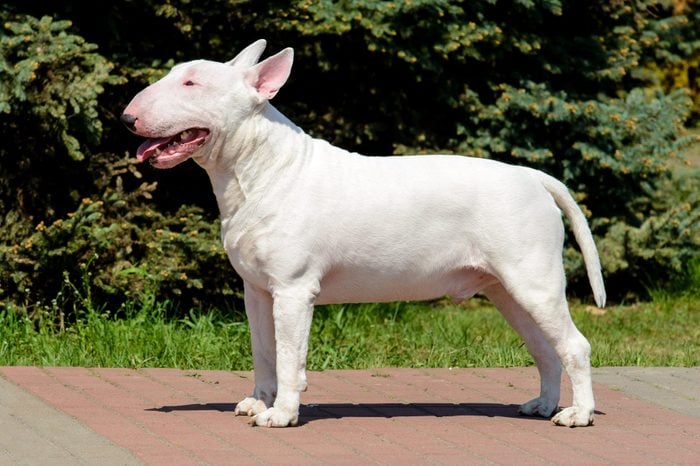
Bull terrier
If you really want a dog with a big nose, look no further than the bull terrier. These oddballs of the dog world are known for their curiously egg-shaped heads, arched noses and compact, muscular bodies. Despite being bred as fighting dogs, bull terriers are highly affectionate family dogs that crave human company and tend to shadow their family members. That said, they’re not always friendly with other dogs or small animals, so it’s a good idea to socialize them early.
The bull terrier is a breed that does well in apartments, partly because it doesn’t tend to bark very much. But don’t leave yours alone for long periods of time—it might get destructive.
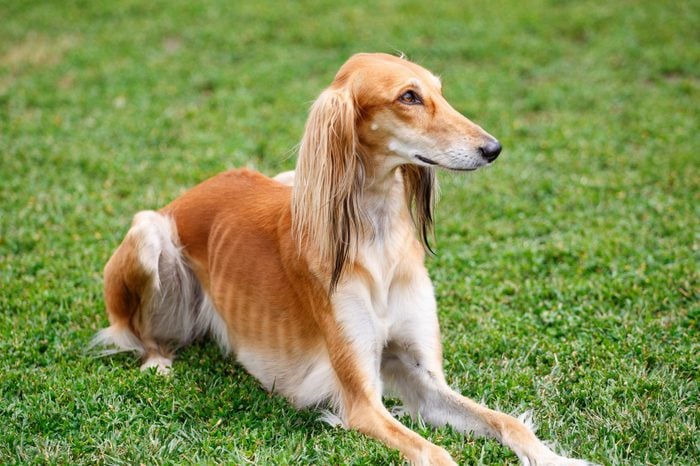
Saluki
This ancient dog breed originated in the Middle East, where it was used to chase down and kill running prey, like hares and gazelles. The long, tall, sleek Saluki still has a strong prey instinct, so it’s not ideal for homes with small animals (unless raised with them) and shouldn’t be trusted off-leash in unfenced areas. You’re going to want to keep this highly intelligent and task-oriented pup busy. Dr. Bernal suggests giving your Saluki “a puzzle mat that allows them to use their nose and find a tasty reward.”
Best for homes with fenced yards and owners dedicated to their training, these dogs are loyal, if a bit aloof, and will provide years of quiet, alert companionship.
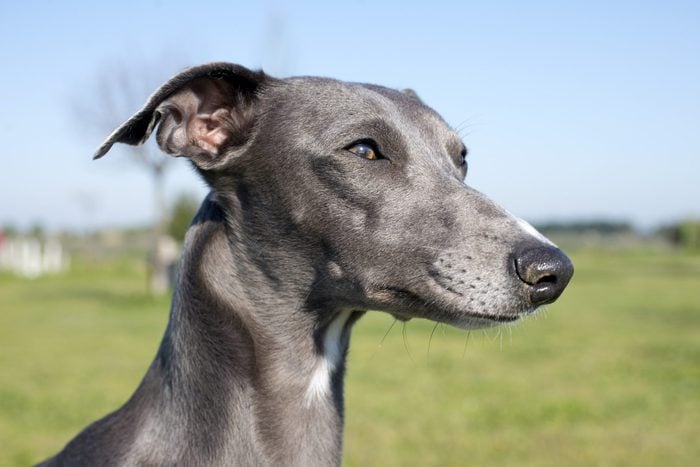
Whippet
Like other sight hounds, sleek whippets were bred to chase rabbits and other swift prey. Today, the breed is loved for its tender expressions, playful nature and adaptability to most families. It still loves a good run, so get ready to play a lot of fetch with this expert sprinter.
Because they still retain a strong prey instinct, whippets aren’t recommended for homes with cats and other small animals unless raised with them. But they’ll bond with family members and are great with kids. Be sure to give these short-haired, skinny dogs a warm dog bed indoors, plus a coat for cold-weather walks.
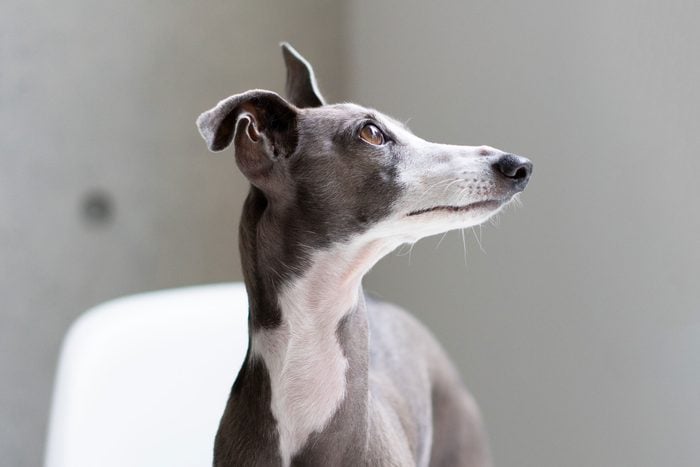
Italian greyhound
At just over a foot tall at the shoulder, the Italian greyhound is the smallest dog with a long nose on our list. This adorable little charmer will quickly bond with family members and warm up to other dogs, though it may be a little shy around strangers. In terms of care, this is an incredibly low-maintenance dog breed: It sheds very little and doesn’t drool.
Because Italian greyhounds were bred down from larger sight hounds that pursued game, they will chase anything that moves. They love exercise, so if you have a home with a fenced-in area where they can roam free, that’s a bonus. But it’s not a requirement; Italian greyhounds are highly suited to apartment living. Just be sure to give them long walks or runs daily, and don’t leave them alone for long periods of time.
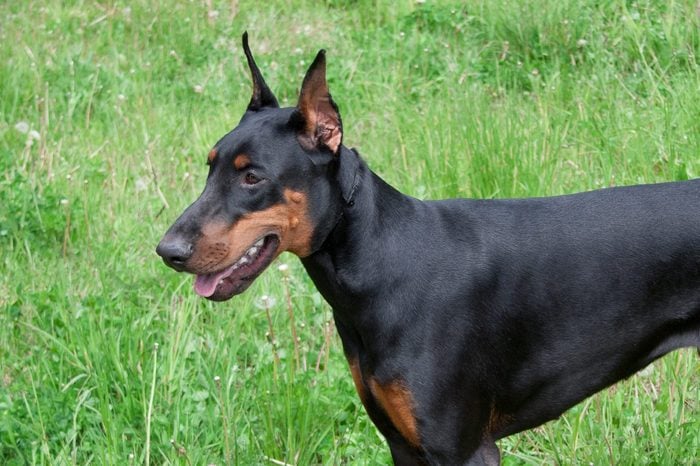
Doberman pinscher
An effective guard dog, the Doberman pinscher gets a bit of a bad rap. These dogs are often depicted in films and on TV—including in cartoons—as clever yet vicious. The clever part, at least, is right. These intelligent dogs need consistent training and stimulation, and they’re best owned by someone equally smart and active.
It’s also true that they’re not always friendly with other dogs and will defend their family members from any real or perceived threat. But they’re incredibly trustworthy, loyal and protective pups. And they can also be big goofballs. Overall, this long-nosed dog makes for a beloved addition to the household.
Why trust us
At Reader’s Digest, we’re committed to producing high-quality content by writers with expertise and experience in their field in consultation with relevant, qualified experts. For this piece on dogs with long noses, Elizabeth Heath tapped her experience as a reporter who has covered pets for years, and then Caroline Coile, PhD, an award-winning journalist specializing in canine breeds, health and science, gave it a rigorous review to ensure that all information is accurate and offers the best possible advice to readers. We verify all facts and data, back them with credible sourcing and revisit them over time to ensure they remain accurate and up to date. Read more about our team, our contributors and our editorial policies.
Sources:
- Danielle Bernal, DVM, veterinarian at Wellness Pet Company; email interview, Jan. 29, 2024
- Jennifer Bruns, DVM, MPVM, veterinarian with PetSmart Veterinary Services; email interview, Jan. 30, 2024
- Rebecca Tremble, DVM, U.S. director of professional partnerships and strategy at Hill’s Pet Nutrition; email interview, Jan. 30, 2024

